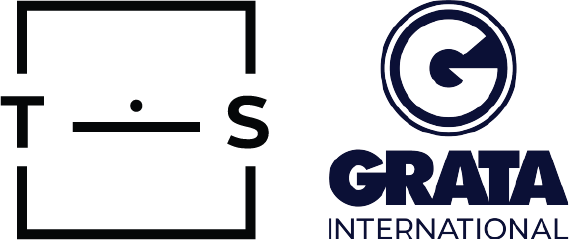In recent years, digital assets have become an increasingly important part of modern business and investment. Although topics such as Bitcoin, digital tokens, and cryptocurrencies still provoke a certain degree of distrust and sensationalism, understanding the legal status of digital assets today is crucial for both individuals and legal entities.
Following the “spirit of the times,” which brings a redefinition of the traditional financial system and a wave of the Fourth Industrial Revolution based on blockchain technology, the Serbian legislator, by enacting the Digital Assets Act, which came into force at the end of June 2021, introduced greater legal certainty in this area, resolved numerous ambiguities, and opened the way for a new investment environment, although in certain parts the law still has minor imperfections. With the adoption of this act, Serbia established a clear legislative framework and positioned itself among the pioneers in Europe who timely recognized the significance of digital assets. The enactment of the Digital Assets Act was also accompanied by amendments to other relevant regulations, particularly those related to tax legislation (crypto tax).
According to the latest research, the market capitalization of digital assets in the Republic of Serbia is estimated at around 5.5 billion euros, while between 4% and 6% of Serbian citizens own some form of digital asset. In European Union countries, this figure ranges between 10% and 15%, and in North America, it is around 30%. Estimates suggest that approximately 500 million people worldwide own some form of digital asset, which clearly indicates that this industry is in exponential growth in the years ahead.
Which types of digital assets are recognized by the Digital Assets Act in Serbia?
When discussing the types of digital assets themselves, the Digital Assets Act recognizes two main categories:
– virtual currencies and
– digital tokens.
This classification is legally significant because, for example, under the Value Added Tax Act, there are differences in the way these categories are regulated.
The National Bank of Serbia is responsible for the area of virtual currencies, while the Securities Commission is in charge of the area of digital tokens, noting that so far 10 white papers (whitepapers) have been issued in the Republic of Serbia, with a growing trend.
Bitcoin – What Are Virtual Currencies and How Do They Work?
The law itself defines virtual currencies as a type of digital asset that is not issued by a central bank or any other public authority, is not tied to legal tender, and does not have the legal status of money, but is accepted by individuals or legal entities as a means of exchange and can be bought, sold, exchanged, transferred, and stored electronically. If we consider this definition through the example of the most well-known virtual currency – Bitcoin, we conclude that virtual currencies are not legal tender, but they are a means of exchange that operates on principles similar to money. They do not depend on trust in a central bank or the state, but on trust in technology functioning outside the reach of any institution. The original idea behind Bitcoin was precisely to create an alternative method of payment that occurs publicly, without intermediaries, and without banks. Today, Bitcoin, despite its minor or major fluctuations, is truly becoming digital gold and a store of value. Historically, over the past ten years, Bitcoin has delivered higher returns to investors than traditional financial instruments such as the S&P 500 index, especially considering that Bitcoin issuance is limited to 21 million and that there will be no possibility of causing inflation with newly created Bitcoin. Following the economic maxim that everything rare is valuable, we can only speculate on the value of Bitcoin in ten years.
What Are Digital Tokens and What Types Exist?
When it comes to digital tokens, the law defines them as a type of digital asset that represents a specific property right in digital form, which may also include the token holder’s right to receive certain services.
From the perspective of the digital token holder, they are distinguished as:
– Investment tokens (investment tokens) and
– Utility tokens (utility tokens)
Investment tokens have a financial nature and are used as a capital-raising instrument, as they allow their holders the potential for capital appreciation or certain governance rights.
Utility tokens provide access to specific services and serve a more practical rather than financial function.
Based on their interchangeability, tokens are divided into:
– Fungible (fungible tokens), which have the same characteristics and value and can be exchanged with each other, and
– Non-fungible (non-fungible tokens – NFTs), which are unique and cannot be replaced by another token.
When it comes to NFT tokens, each has its own value and individuality, making them particularly appealing for digital art, collectibles, and similar areas. Generally speaking, digital tokens grant their holders certain rights contained within the file as an electronic record, which can include any property right, such as participation in profits (right to a dividend), ownership rights, intellectual property rights, and so on.
The value of a token derives from what it represents, so it can be said that digital tokens are a kind of digital security in the form of an electronic record, which can be easily transferred from one crypto wallet (wallet) to another.
Are There Hybrid Forms of Digital Assets and Stablecoins?
In addition to this basic classification, the law recognizes:
– Mixed (hybrid) tokens, which combine characteristics of digital assets and virtual currencies, and
– Stablecoins (stable coins), which aim to maintain a stable value in relation to a specific asset or currency.
In practice, this means that issuers of stablecoins, such as Tether (USDT), strive to maintain their value equal, for example, to one US dollar (1:1), which has proven to be one of the most successful business models in the digital asset world, increasingly adopted by companies and individuals. Supporting this is the fact that, through Tether’s business model in 2024, more transactions were executed than those processed by Visa and MasterCard.
Digital Assets and Legal Certainty – A Step Toward a Modern Capital Market
Digital assets are no longer a concept of the future, but a reality of modern business and the investment environment. By enacting the Digital Assets Act, Serbia has laid the foundation for clear and predictable regulation of a field that combines law, finance, and technology. However, due to the rapid development of the market and ongoing innovations, the interpretation and application of this law require expert understanding and careful alignment with existing regulations.
For law firms and legal professionals, digital assets represent a new and complex field that requires a multidisciplinary approach—from understanding regulations and tax aspects to advising clients on secure investment, token issuance, and the use of virtual currencies in compliance with the law.
A proper understanding of the legal aspects of digital assets contributes not only to protecting clients’ interests but also to strengthening trust in the digital market as part of Serbia’s modern financial system.




